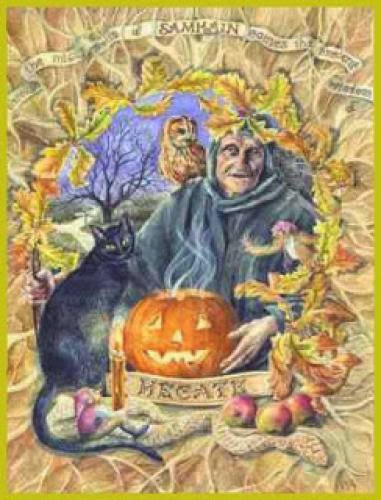
While almost all Celtic based traditions recognize this Holiday as the end of the "old" year, some groups do not celebrate the coming of the "new year" until Yule. Some consider the time between Samhain and Yule as a time which does not even exist on the Earthly plane. The "time which is no time" was considered in the "old days" to be both very magickal and very dangerous. So even today, we celebrate this Holiday with a mixture of joyous celebration and 'spine tingling" reverence.
The Samhain Holiday begins at sundown on October 31st. The nightide was always a time to be wary of walking alone in the countryside. So much more on this Night when the veils between the worlds of humans and spirits was at its thinnest. Traditional lore speaks of the dead returning to visit their kin and the doors to the Lands of the Sidhe (pronounced "shee") or Faery Realm being opened.
"The Feast of the Dead" ("Fleadh nan Mairbh") is laid out by many to welcome these otherworldly visitors and gain their favor for the coming year. Many folks leave milk and cakes ("Bannock Samhain" ) outside their door on Samhain Eve or set a place at their table for their ancestors who may want to join in the celebrations with their kin and family.
Read More...
Source: AUTHOR: Christina Aubin


















